Whether you’re a PPC advertising expert or are just dipping your toes in the world of search ads, you’ve probably encountered one or more common PPC advertising problems.
Yet despite its challenges, hundreds of thousands of businesses use online advertising to increase their reach and revenue. With 80% of marketers allocating at least part of their ad budget to search, the importance of PPC advertising is evident.
Though PPC advertising is integral to a well-rounded marketing strategy, poorly thought tactics could land you in hot water. From low-quality traffic to click fraud, many issues can negatively affect your PPC results.
So if PPC advertising has been around for over 20 years, why do some companies still struggle with it? How come there’s no universal guide to profitable PPC? Why do some marketers still see little return from their ad spend?
In this guide, we’ll cover the basics of search advertising, and 6 of the most common PPC advertising problems and how to fix them.
What is PPC advertising?
Pay-per-click (PPC) is an online advertising model where advertisers pay each time a visitor clicks on one of their ads. Your ads compete in a blind auction against others targeting the same traffic, and both the position of your ad and the amount you pay per click is determined by multiple factors, chief of which is your bid.
When a user searches for something matching or related to the keywords you target, the winning ads are displayed at the top or bottom of the search engine results page (SERP) with the ‘Ad’ tag beside it.
Businesses use PPC advertising to increase traffic to a landing page, grow brand awareness, and sell more of their products and services to people who are in-market for them. The most popular platforms offer incredible range and depth, allowing advertisers who understand both the brand and the platform to create hyper-contextual ads that fit your audience’s needs.
PPC advertising helps businesses get in front of people looking for something exactly as they search for it. With an elevated sense of targeting that traditional advertising does not allow for, PPC is about as personalized as it gets.
Types of PPC ads
Though most PPC ads appear in search engine results page, there are others that show up in your email inbox or on video streaming services. Three of the most common types of PPC ads across platforms include:
Text Ads
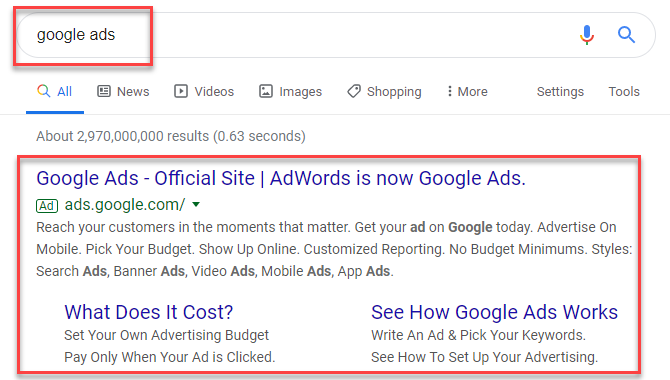
Text ads are exactly what they sound like – plain text written by a copywriter with no visual aides. Text ads are triggered when a user’s search aligns with a particular keyword in your ad campaign.
Text ads are varied – Responsive Search Ads for quick testing of different ad text, Expanded Text Ads for more detail, and Dynamic Search Ads for even more personalization.
Display Ads
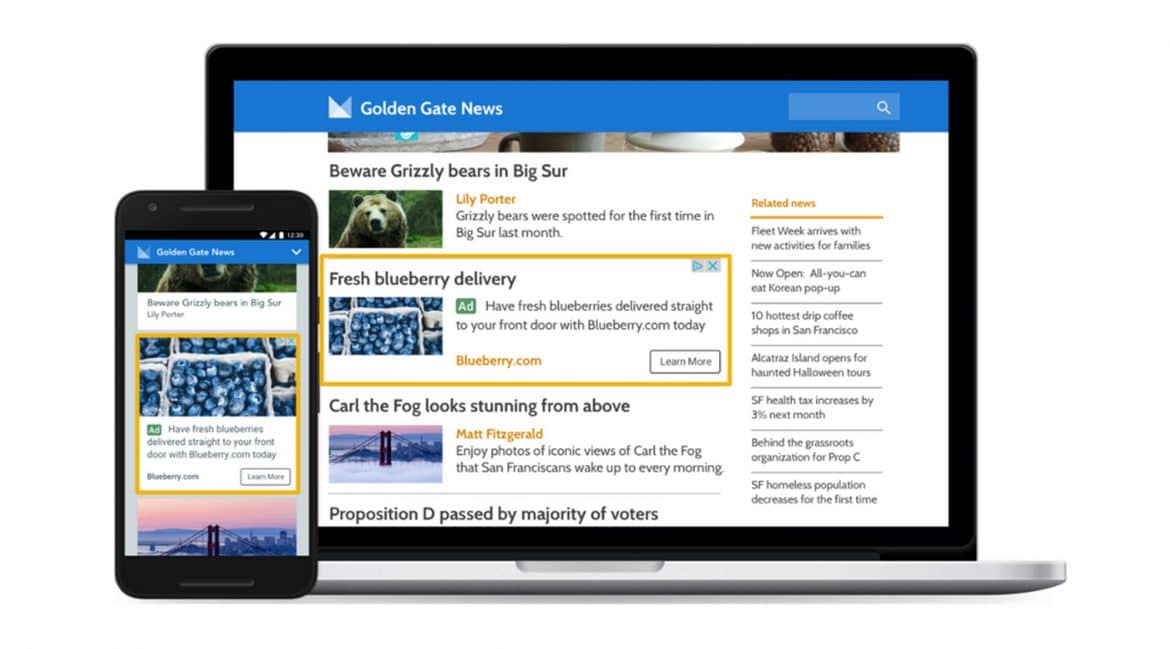
Display ads are commonly referred to as banners and are a visually-driven ad type. With these ads, you can combine text with visuals that create something greater than the sum of its parts.
With a display ad, you can show a preview of your product or service to create more intrigue than is usually possible with search ads. However, managing where your display ads show up is considerably trickier than targeting for a search ad.
Shopping Ads
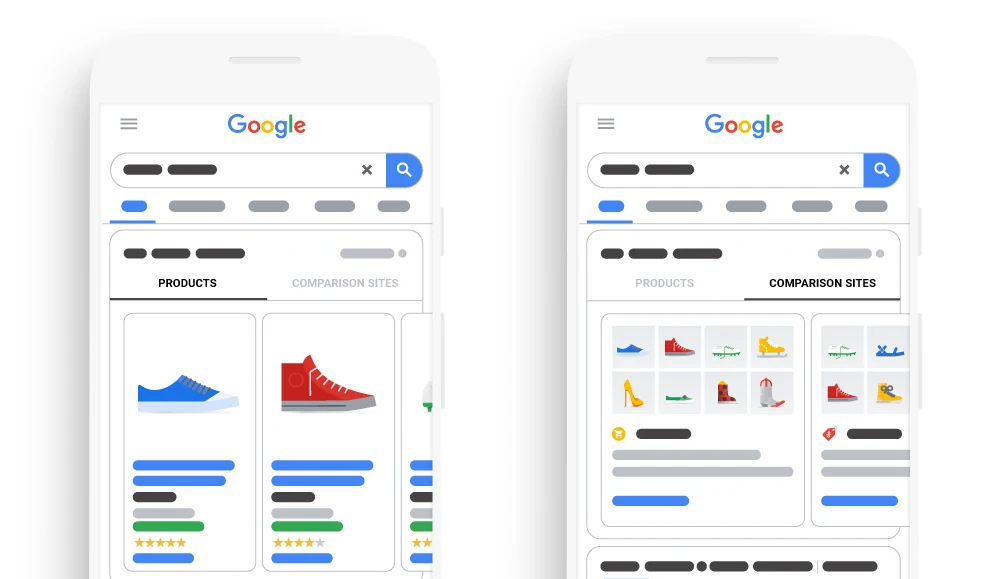
Shopping ads are typically shown when the user searches for a specific product or product category that businesses sell online. A shopping ad includes a photo of the product, its price and specifications, shipping information, and a link to an e-commerce store where you can make a purchase.
When a user clicks on your ad, they’re redirected to the landing page and you pay the ad platform for each click – irrespective of whether or not that click leads to a purchase.
7 Common PPC Advertising Problems & How to Fix Them
A lot goes into building a winning PPC ad campaign – from keyword research to structuring ad groups to building intent-matching landing pages. And there’s plenty of incentive to get this right.
Search engines reward advertisers whose ads are relevant to the people they’re targeting – for example, a higher Quality Score can help lower the cost of a winning bid.
Yet for all that we know about search advertising, many businesses and advertisers still struggle to identify problems during the optimization process. If you don’t have the expertise or experience to troubleshoot these effortlessly, this guide to 6 of the most common PPC problems will help.
Problem #1: Low Impressions
One of the most common PPC advertising problems is an ad or ad group that’s not being seen, measured by a metric called impression share.
When you run a PPC campaign, you’ll need at least one ad group with at least one ad targeting at least one keyword. Depending on the keyword match type you select, your ad could show on any number of searches if you bid high enough.
Impression share tells you the total number of times your ad has been seen as a percentage of the number of times it could have been seen.
But why do ads lose impression share?
There are several possibilities, but the most likely ones are:
- Your budget is lower than ideal
- Your ad rank is not high enough
- You’re not bidding enough
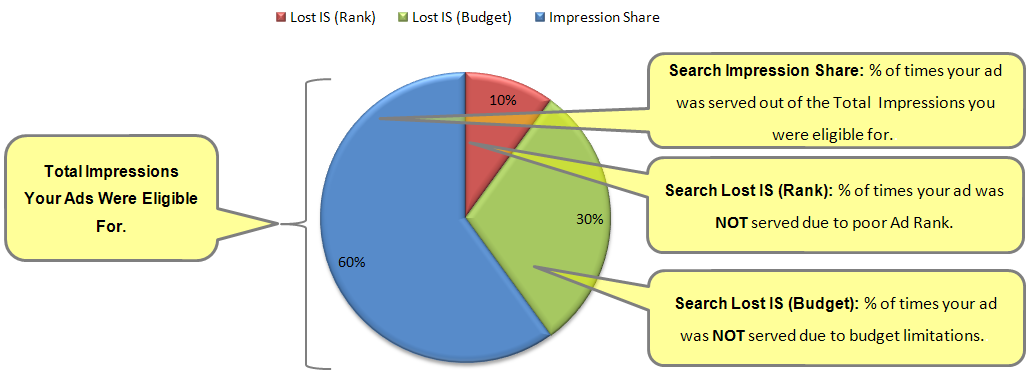
Solution
When optimizing PPC ads, impressions are one of the first things to look at (can’t get tons of clicks or conversions if your ad isn’t being seen). If your impression share is too low, follow these steps to improve it.
1. Increase your budget
If your campaign is running on a low budget, it’s tough to bid enough to get a high ad rank. And once you run out of money (which is soon), your competitors’ ads will start to dominate searches. But setting your budget too high could rapidly drain your resources. Test different bids and budgets to find a balance.
2. Adjust your bids
Bidding is one of the most important areas for PPC optimization, but it’s anything but straightforward. You can increase and decrease budgets based on the time of day, the location of your users, the device they’re on, and many other parameters. Bid higher for parameters where you’re behind, and hold or even decrease where you’re ahead.
3. Revisit keyword match types
Keyword match types make a difference because something like Broad Match can open up your opportunities to show for similar searches. The important thing to remember as you try different keyword match types is to look at click-through and conversion rates. This will tell you if the increased impression share actually has any value.
Problem #2: Too many keywords
It might be tempting to add every keyword related to your business. After all, more traffic should theoretically help you convert faster and at a higher rate.
This is a beginner’s mistake that most new PPC account managers quickly grow out of.
When you build your ads and ad groups, it’s important to meet different people at different stages of the buying journey. So if your campaign is for watches, you’d have different ad groups for people who are just getting started with research, those browsing options, and those actively in market for a specific product or brand.
Keyword stuffing destroys this segmentation by driving all kinds of search intent to all your ads. Relevance becomes irrelevant.
Adding all your keywords to one ad group can alienate people who searched for one thing but saw another, which in turn causes Google to rank you as less relevant. It’s also a hallmark of weak account structure, ultimately leading to a low return on ad spend (ROAS) as well as overall profitability.
So how many keywords is too many?
Try to stick to 20 or fewer keywords per ad group. This will prevent traffic and intent dilution, but it’ll also make you a better marketer by forcing you to be selective with which keywords and phrases you want to target.
Solution
1. Add negative keywords
Negative keywords prevent your ad from being shown when users make a specific search related to your area of expertise. So if you’re running ads for a supermarket that doesn’t carry refrigerated products, you might exclude searches for common items like milk and soda.
You can decide which keywords to add as negatives by researching the search terms that led to clicks on your ad. Anything that returned a sizable number of clicks without a significant conversion rate is game, as are the multitude of collectively expensive yet low-volume searches that don’t convert.
2. Understand keyword match types
Search engines offer several ways to match keywords, but here are Google’s three core offerings.
Exact Match is exactly what it sounds like: matching a keyword word for word with no change to sequence. Keep in mind that Exact Match will show your ad for queries that have additional words that don’t alter the intent of the search.
Broad Match is Google’s default setting for all keywords, and works to include related terms such as synonyms and misspellings. This is a good way to increase your top-of-funnel traffic but needs consistent monitoring.
Phrase Match tells Google to show your ads for queries where your keyword appears exactly as is within a larger query. This opens your ads up to newer search intent, so be sure to optimize as you discover what’s working.
Here’s a sample of what queries might trigger your ad under each match type for the keyword “homes in seattle”.
Exact Match: “homes in seattle”, “best homes in seattle”
Broad Match: “seattle apartments”, “home repairs seatac”
Phrase Match: “vacation homes in seattle”, “luxury homes in seattle for rent”
Problem #3: Poorly structured account
Google Ads rarely performs as you hope when your account is lacking clear, defined structure. From campaigns down to ads, every level of your account impacts both Quality Score and your own ability to segment effectively.
When it comes to the naming and structure of PPC ad campaigns, it’s vital to have a system of organization that reminds you what each item does. Not only does this give everyone working on the account a clearer understanding, but you also spend less time finding the offending elements when something goes wrong.
If you’re an agency taking on a new account that’s in need of restructuring, we recommend this video from our UnLevel virtual conference on how to set things up so they’re future-proof.

Solution
1. Set an objective for your campaign
Make sure every campaign has an objective before getting deeper into it. Are you increasing awareness, generating sales, or acquiring leads? Your KPIs will change accordingly, as will you optimization techniques.
2. Divide ad groups based on offering
Break up ad groups based on the value proposition they offer the target audience. For instance, a dairy campaign for a regular supermarket might have ad groups for milk, cheese, and yogurt while excluding terms for dairy products they don’t stock.
3. Match ad groups to search intent
Every ad group you create targets a cohort of users based on why they’re searching for a specific thing. Are they exploring their options? Comparing brands or products? Looking for reviews? Ready to make a purchase?
Navigational intent is upper-funnel and indicates that someone is still in the research phase. Informational intent signals a consideration, and transactional intent indicates that a purchase is near or on the horizon.
Look to your search queries report for help segmenting intent. Terms like “buy” or “for sale” indicate transactional intent, while comparison searches involving your brand (“brand x vs. brand y” or “brand x reviews”) are signals of deeper informational intent.
4. Test your ad structure
Always test your campaign structure before going all in with your budget. A testing period is good to help filter out expensive queries, refine your messaging, and even help the ad platforms learn more about what works for your brand if you plan to use automated bidding.
Here are some other easy tips to help you build out a new account or restructure an existing one:
- Decide on a naming convention for campaigns and ad groups
- Split your keywords by ad group intent or purpose
- Segment audiences to match the ad group’s intent
- Make sure each ad group has the right landing page
Problem #4: Passive bid management
According to Google, search ads increase brand awareness by as much as 80%. And their own Smart Bidding feature is a great way for newer advertisers to focus less on levers in bid management.
But irrespective of how convenient Smart Bidding is, passive reliance may lead to a sharp hit to PPC performance.
PPC campaigns – even those running with the most sophisticated automation – need regular monitoring and optimization to make sure they keep reaching the right people at the right time.
PPC isn’t the Showtime Rotisserie – the “set it and forget it” approach does not work for multiple reasons:
- Competition is already high
- New competitors are always advertising
- Google Ads is constantly evolving
- Search behavior is susceptible to even slight volatility
Solution
The best route for new and growing PPC advertisers is to put in the work. Learn how manual bid management works and take an active role in managing it. Use this experience to learn what works and what doesn’t for your account.
Once you do that, using Smart Bidding gets way easier. Since it considers your account’s historical data along with millions of user signals, having several months of manual conversions helps Google quickly learn what bidding decisions to make on your behalf.
Remember that Smart Bidding requires 30+ conversions on manual bidding within a month to do its best work. Oil the machine manually before leaning on automation.
1. Study the patterns
Look at your conversions and then dig deeper to find the common threads. When are you getting the most conversions? In which locations? On which devices? For which types of audiences? The answers to these questions will tell you how to set lucrative bids.
2. Make brave adjustments
Playing it safe is the advertising equivalent of never leaving your hometown. Sure, you might know what you’re doing and get by fine, but you’ll probably never experience anything new or groundbreaking.
When it comes to bid management, sometimes you have to take a risk to win big. Like seeing that 75% of your conversions for a babysitting service come on weekend mornings and summers, and going all in on those times.
Core marketing strategy tells you to find your niche rather than be available to all people; PPC is not much different.
3. Improve your Quality Score
Google rewards advertisers who create ads that are more relevant than the average for their industry or audience. All the quality elements of your campaign contribute to an overall Quality Score metric based on a scale of 10.
If your campaign’s Quality Score is considerably higher than those of the others in the auction, you’ll end up paying less per click. This makes it easier to achieve a higher ad rank without busting your budget.
Our founder Frederick Vallaeys helped develop the Quality Score component of Google Ads during his time with Google.
Learn more about why Quality Score still plays a significant role in 2024
Problem #5: Wrong search intent
We’ve mentioned search intent a few times already in relation to building solid ad groups. But a mismatch between what people are searching for and what your ad shows is a dangerous enough mistake to warrant its own advice.
Even if you take all the right steps while setting up your campaign, an ad that doesn’t connect with your audience can be cause for concern.
Let’s say you want to advertise for a new line of running shoes. You might decide to target people interested in health and exercise searching for “jogging shoes”, “running shoes”, or even “gym shoes”.
There’s a deeper layer at play, though.
While “running shoes” is a very open-ended query that doesn’t tell you very much about what’s going through the user’s mind, something like “buy running shoes online” or “best running shoes 2021” indicates where they are in the intent cycle: navigational, informational, or transactional.
This is how you decide who sees the ads that talk about your running shoes being shipped anywhere in the US overnight, and who sees the ads talking about their comfort and fit.
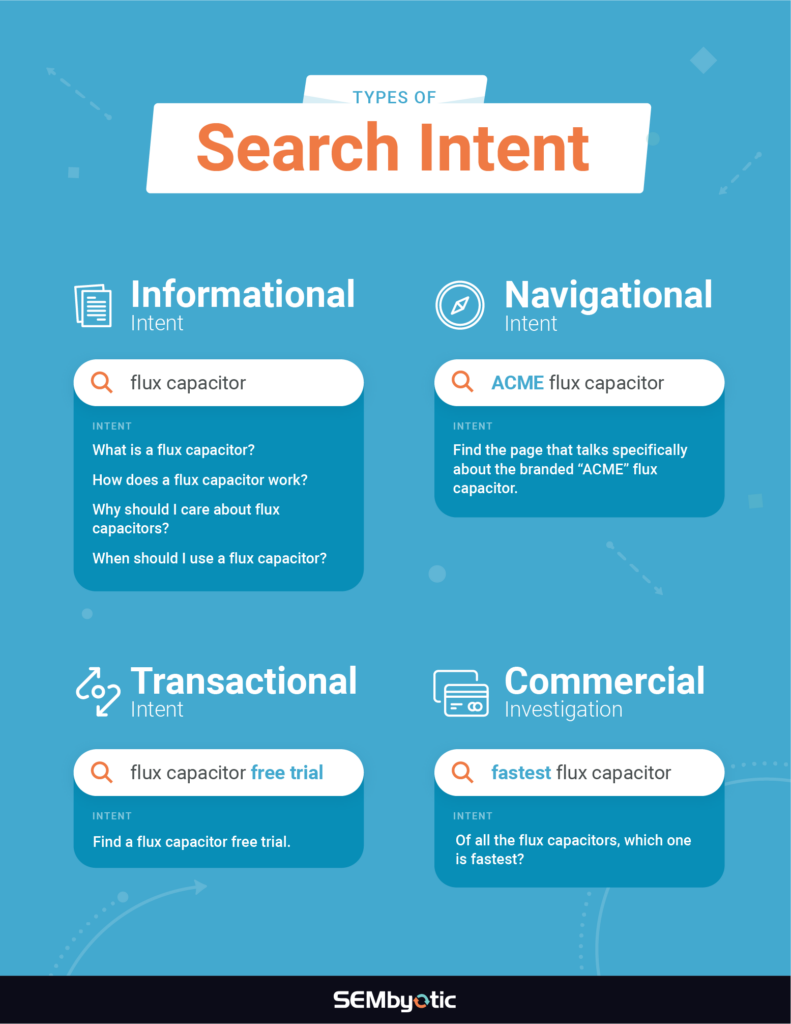
Solution
Search engines serve their target audience based on multiple factors including past search behavior, current trends, and signals of intent. Here are some ideas to get your ad to match the “why” of a search as well as its “what”:
- Split-test variations in messaging
- Run small tests to see which queries trigger your ads
- Account for homonyms (“close” nearby vs. “close” shut)
- Account for intent (“blog” the site vs. “blog” the article)
- Look for keyword clues about state of mind (words like “buy” or “on sale”)
Problem #6: Focusing on the wrong KPIs
Assuming you already have some brand presence online, PPC ads are a phenomenal way to convert users and grow your presence, unlike organic efforts such as SEO that can take months to make a difference.
One of the most common mistakes advertisers make is declaring a campaign successful prematurely or on the basis of strong numbers for the wrong metrics.
In all fairness, ad accounts have a ton of performance indicators, so unless you know what your account’s business goals are, it can be confusing to know whether you’re moving the needle for your brand or client.
Here’s how to avoid the trap of focusing on the wrong KPIs.
Solution
The right way to measure the performance of a PPC campaign is by looking at its results in the context of the company’s business goals, rather than judging each metric in isolation:
- A high number of clicks and a strong CTR are good if the business wants exposure and awareness, but not if the goal is generating sales.
- A high number of conversions and clicks might look good superficially, but if you see a low CTR it means you’re missing out on so much more.
- A high ROAS figure might look great in isolation, but if your overall ad spend doesn’t consider a product’s profit margin, the business may actually be losing money.
The savviest advertisers look at PPC results in the context of bigger goals like reducing customer acquisition cost (CAC) or increasing lifetime value (LTV).
And then there are other nuances to consider, like a conversion from users in one location being worth more than conversions from another.
For PPC to do its job well, treat it as part of the marketing ecosystem rather than its own entity. Check in with your clients regularly, and make sure the work you’re doing is contributing to their wider targets.
Conclusion
PPC is as vast and as deep as the ocean; no matter how long you’ve been exploring it, there’s always something new to discover.
But when you’re new to online advertising, it can be difficult to know where the ideal limits are – whether that’s with structuring your account, deciding which keywords to target, or trying to make light of your results.
It’s even more difficult when clients look at PPC as a conversion machine with the misconception that you only need to show your ad to make a sale.
Fortunately, there’s are plenty of resources out there to make the journey a bit more navigable – like our blog and PPC Town Hall webcast, where you can ask experts your questions live.
You can also tweet or DM your questions to @Optmyzr and someone from our team will get back to you with the answer – or where to find it!










